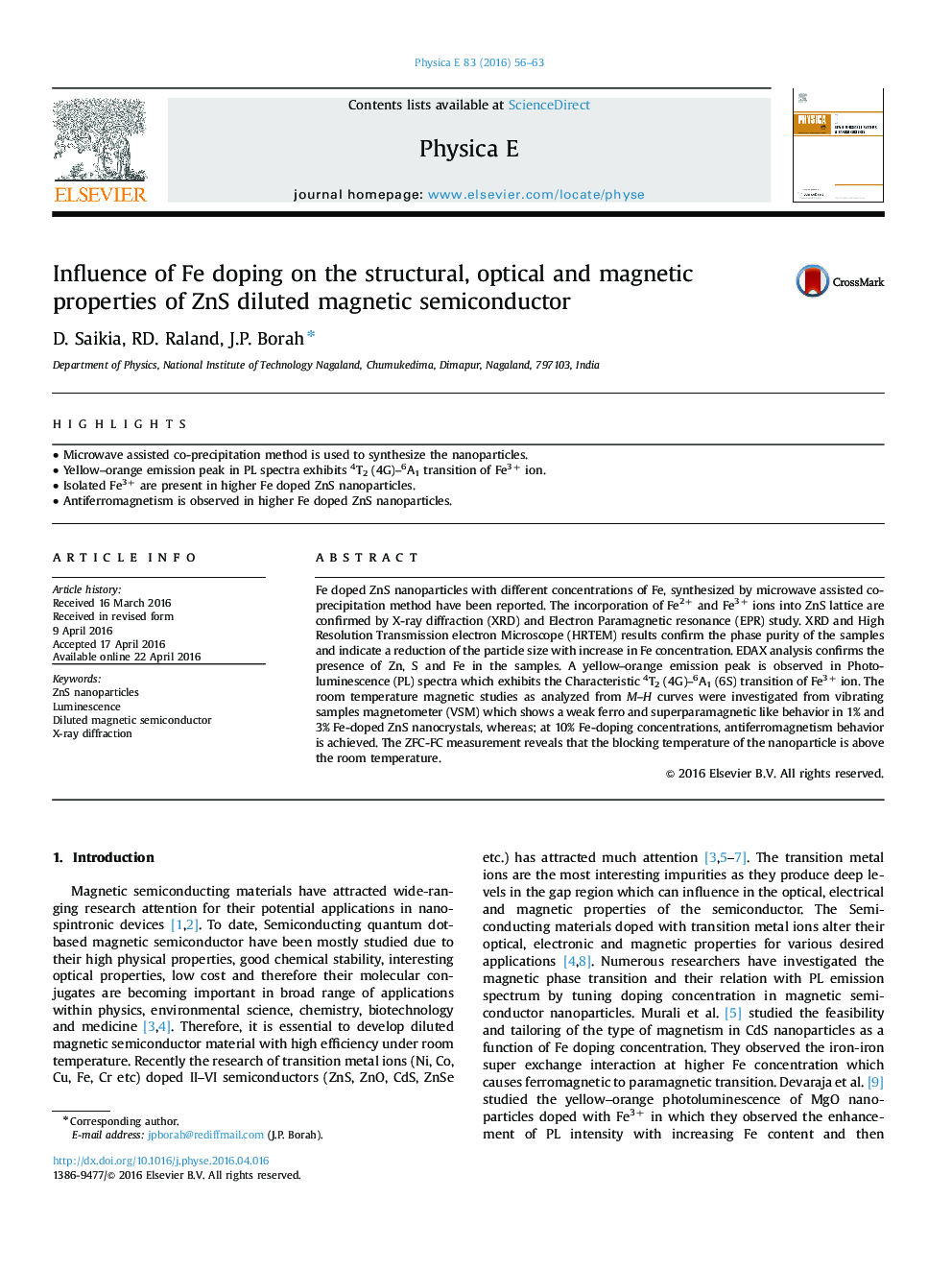| Article ID | Journal | Published Year | Pages | File Type |
|---|---|---|---|---|
| 1543745 | Physica E: Low-dimensional Systems and Nanostructures | 2016 | 8 Pages |
•Microwave assisted co-precipitation method is used to synthesize the nanoparticles.•Yellow–orange emission peak in PL spectra exhibits 4T2 (4G)–6A1 transition of Fe3+ ion.•Isolated Fe3+ are present in higher Fe doped ZnS nanoparticles.•Antiferromagnetism is observed in higher Fe doped ZnS nanoparticles.
Fe doped ZnS nanoparticles with different concentrations of Fe, synthesized by microwave assisted co-precipitation method have been reported. The incorporation of Fe2+ and Fe3+ ions into ZnS lattice are confirmed by X-ray diffraction (XRD) and Electron Paramagnetic resonance (EPR) study. XRD and High Resolution Transmission electron Microscope (HRTEM) results confirm the phase purity of the samples and indicate a reduction of the particle size with increase in Fe concentration. EDAX analysis confirms the presence of Zn, S and Fe in the samples. A yellow–orange emission peak is observed in Photoluminescence (PL) spectra which exhibits the Characteristic 4T2 (4G)–6A1 (6S) transition of Fe3+ ion. The room temperature magnetic studies as analyzed from M–H curves were investigated from vibrating samples magnetometer (VSM) which shows a weak ferro and superparamagnetic like behavior in 1% and 3% Fe-doped ZnS nanocrystals, whereas; at 10% Fe-doping concentrations, antiferromagnetism behavior is achieved. The ZFC-FC measurement reveals that the blocking temperature of the nanoparticle is above the room temperature.
